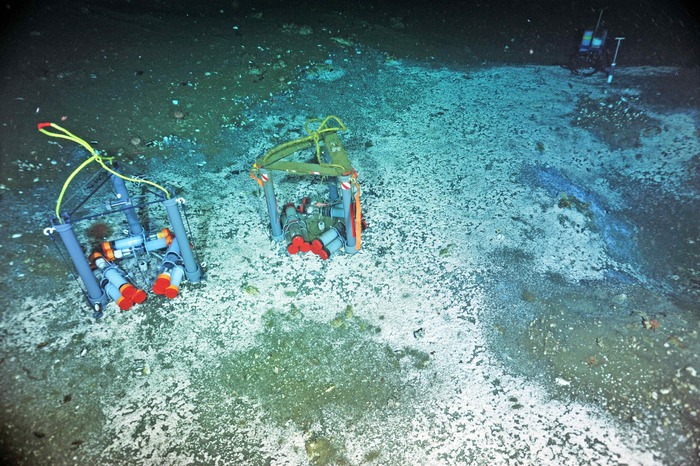
Hagfish investigate flow meters called Mosquitos at methane seeps at Southern Hydrate Ridge (water depth ~800 m). Data from these instruments allow calculation of the flux of fluids into and out of sediments at this gas hydrate site marked by thick bacterial mats and abundant clams. Credit: UW/NSF-OOI/WHOI; V16.
Benthic flow meters allow determination of the velocity of seawater flowing into the seafloor and methane-rich fluids issuing from sediments at methane seep sites at Southern Hydrate Ridge. These measurements are critical to determining the amount (flux) of methane, hydrogen sulfide, and other gases that are emitted into the overlying ocean. Methane is especially important because it is a greenhouse gas, and it and other gases support novel microbial communities that thrive in and on the seafloor at these sites (as well as in the overlying ocean).
There are two types of flow meters installed at Southern Hydrate Ridge (CAT and Mosquitos) that are designed to measure fluids flowing at different speeds. The instruments use osmotic pumps and a tracer injection device that allows post-recovery quantification of flow. The instruments are recovered annually, the fluids are sampled, and then their compositions are measured. The instruments allow time-series measurements to be made to examine changes in flow in response to seismic events, changes in the plumping system beneath hydrate ridge, and gas hydrate deposits in the subsurface.


